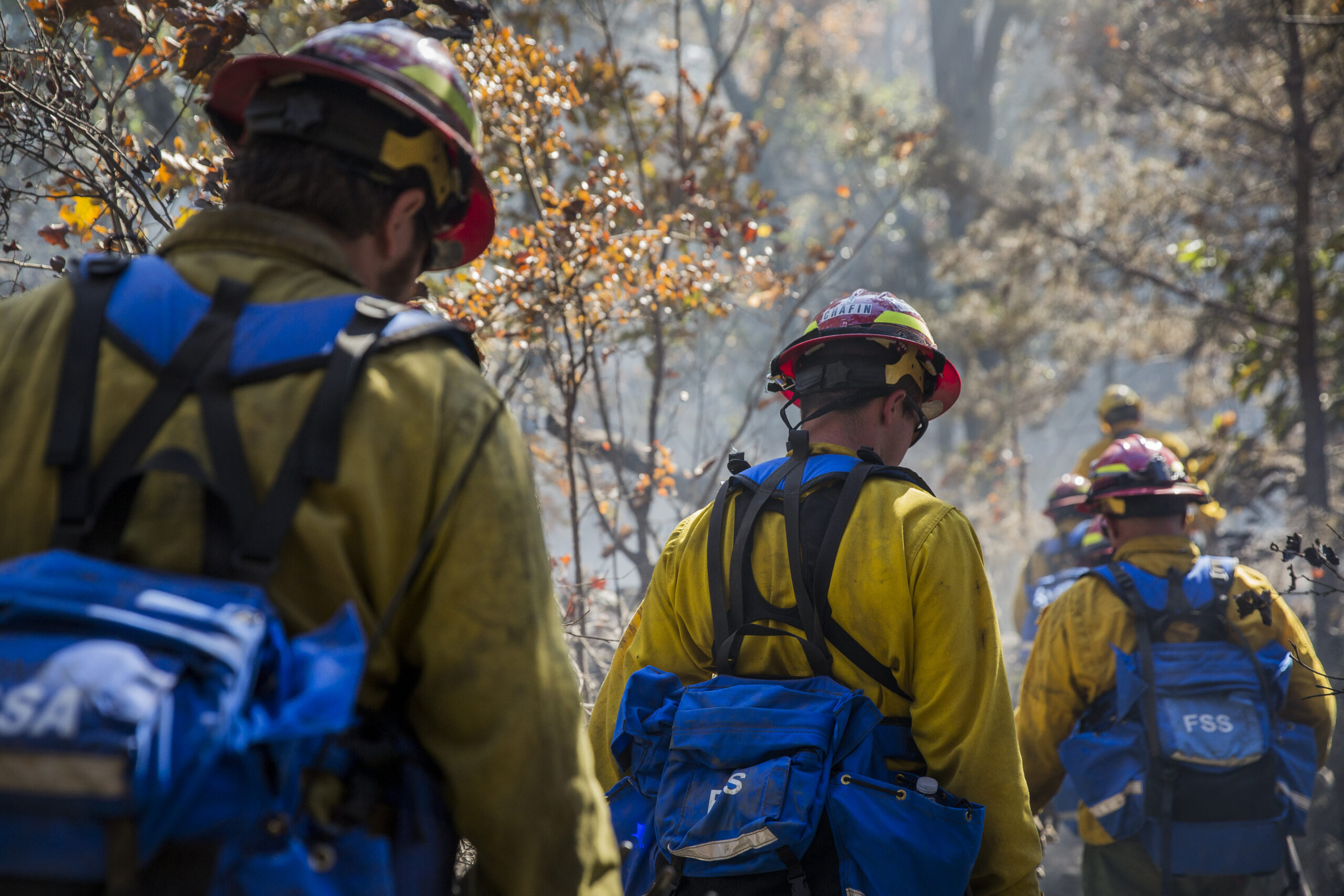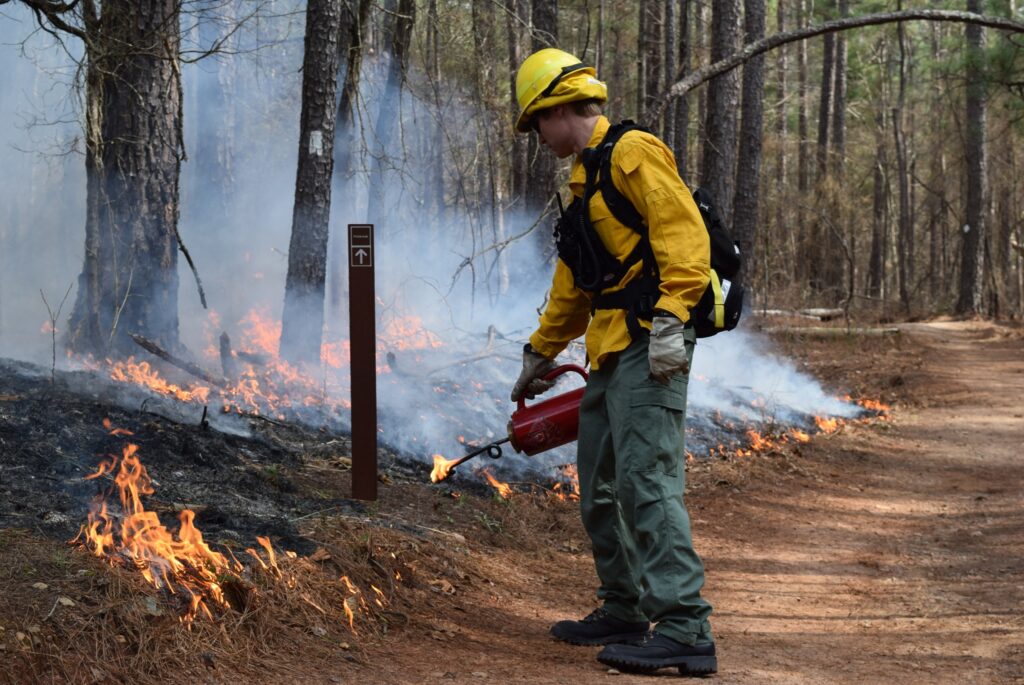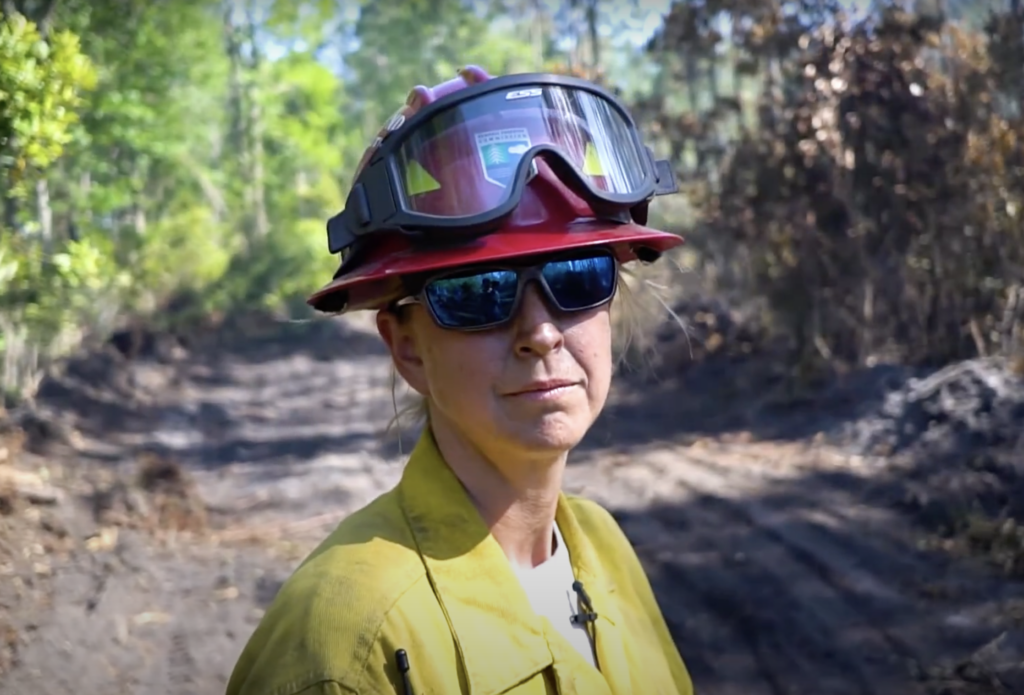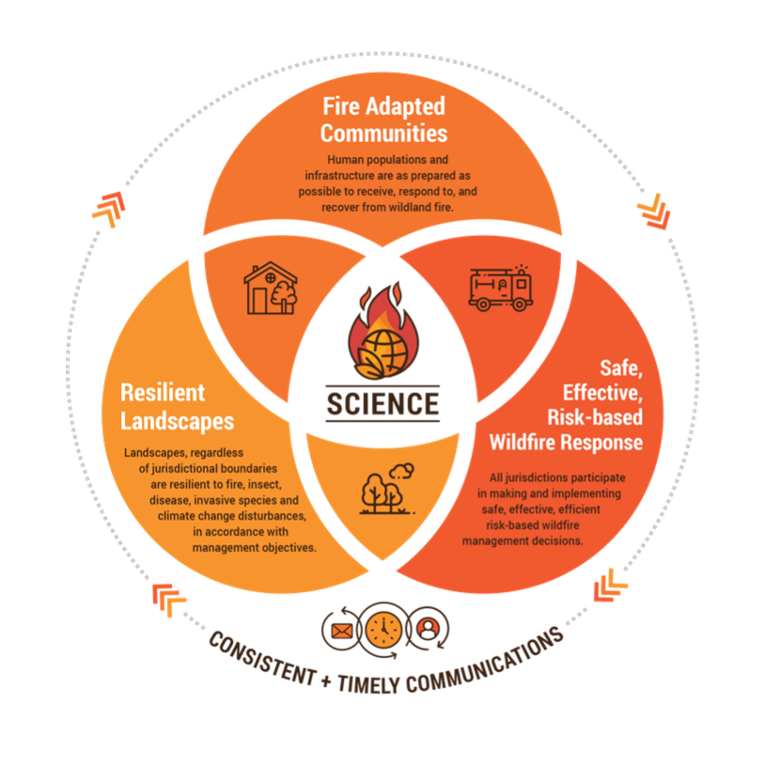Updates & Blog
Honoring bravery and enhancing safety

Each year, we celebrate Wildfire Community Preparedness Day on the first Saturday in May by encouraging communities and organizations across the South to take steps to reduce their wildfire risk. This year, Wildfire Community Preparedness Day also falls on International Firefighters’ Day, which is held annually on May 4. The intersection of International Firefighters’ Day and Wildfire Community Preparedness Day this year provides a compelling backdrop for communities to actively engage in enhancing their own safety while supporting the safety of our wildland firefighters. As the South continues to experience more frequent and severe wildfires, these events highlight the critical relationship between firefighter safety and community-driven wildfire mitigation efforts.

Celebrating International Firefighters’ Day
International Firefighters’ Day is devoted to acknowledging the bravery, dedication and sacrifice of firefighters who protect life, property and natural resources from fires. The day serves as both a memorial for those who have perished in the line of duty and a celebration of the brave men and women who continue to help keep our communities safe.

The Critical Role of Wildfire Preparedness
At the same time, Wildfire Community Preparedness Day draws attention to the escalating risk of wildfires and the importance of readiness. Wildfires in the South are inevitable – It’s not a question of if, but when. In 2022, 56% of all wildfires reported in the nation occurred in the South. The region is also home to three of the top four states in the nation with the most Wildland Urban Interface (where homes near nature are more at-risk to wildfire). As wildfires become larger and more destructive, driven by drier conditions and hotter climates, preparedness is essential for community safety and resilience. State forestry agencies and partners are coordinating across boundaries to develop resilient forests and communities – while protecting life, property and natural resources from the threat of wildfire.

Just like landowners are responsible for managing their lands, homeowners and communities have a responsibility to manage their property and infrastructure in ways which maximize safety and are compatible with the fire-dependent ecosystems within which we reside. Wildfire Community Preparedness day encourages everyone, from individual homeowners to local municipalities, to take proactive steps to significantly reduce wildfire risk.
Supporting Firefighters Through Community Action
A vital yet often overlooked aspect of wildfire preparedness is its contribution to wildland firefighter safety. By adopting and maintaining wildfire mitigation strategies, communities can protect themselves while significantly reducing risk to wildland firefighters by reducing the frequency and intensity of dangerous and unpredictable wildfire conditions. Key actions communities can take include:
- Community Wildfire Preparedness Plans: One of the best strategies for reducing wildfire risk to communities is the development and implementation of a community wildfire protection plan (CWPP). State forestry agencies work with community leaders, local emergency managers, fire departments and others to plan and implement a CWPP. The goal is to help communities learn to live with and withstand the impact of wildfires. A CWPP is unique in that it empowers communities, community leaders and local responders to collaboratively determine the best strategies for each community’s unique set of circumstances. These strategic plans guide community decisions and prioritize actions to decrease identified wildfire hazards. Communities should regularly review and update their CWPP to mark completed actions and address new or ongoing hazards.
- Fuel Reduction Programs: By clearing flammable vegetation and debris, either through prescribed fire or mechanical treatments, wildfires that burn in areas where overgrowth has been reduced cause less damage and are much easier to control. Prescribed fire, when utilized judiciously can have the biggest impact on protecting our communities and maintaining the fire-dependent ecosystems present in the South.
- Building and Zoning Regulations: Promoting the use of fire-resistant materials in construction and renovations helps prevent buildings from igniting, thereby easing the burden on firefighting and emergency resources during wildfire events.
- Education and Outreach: Well-informed communities are better prepared to take early action, potentially preventing small fires from escalating into major disasters.
As we commemorate these important observations, we celebrate the bravery of our firefighters and take concrete steps to minimize the risks they face. By implementing effective wildfire preparedness and mitigation strategies, communities not only safeguard their own lives and properties but also contribute to a safer environment for the firefighters dedicated to protecting us. Let this day remind us of our shared responsibility and the significant impact of community involvement has on wildfire safety for all. To learn more, visit the Southern Group of State Foresters’ Reducing Wildfire Risk webpage.